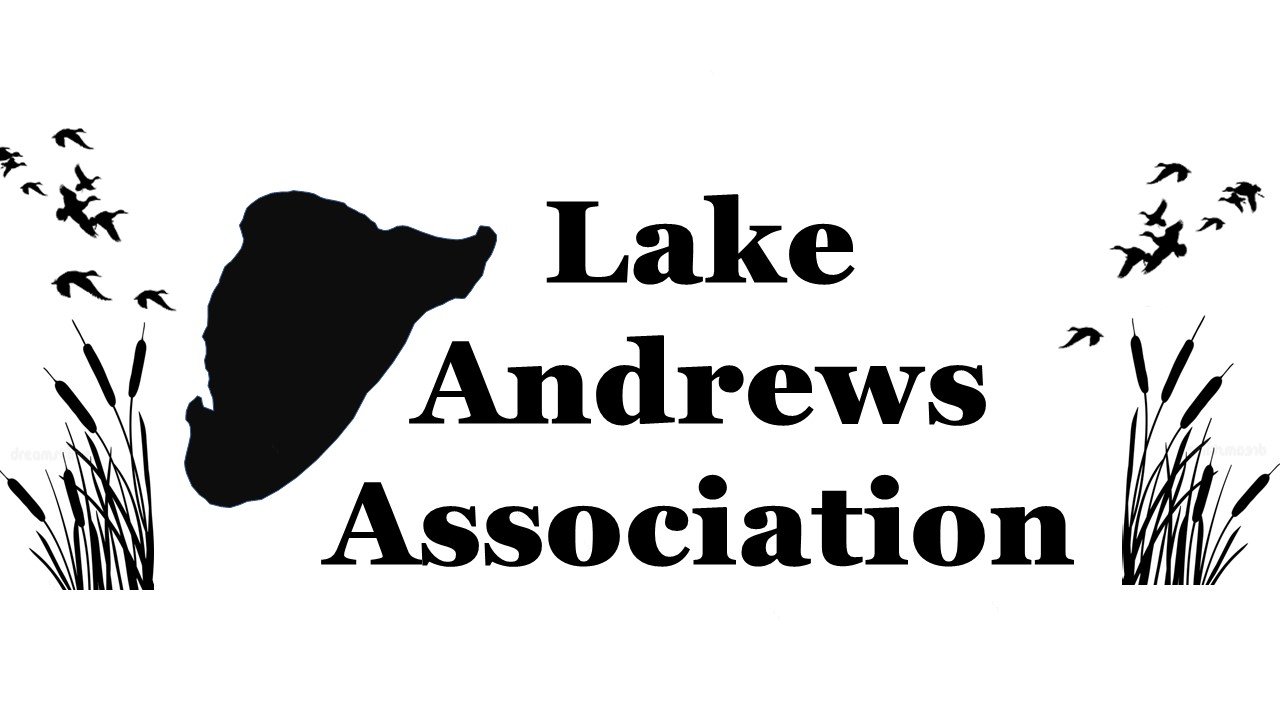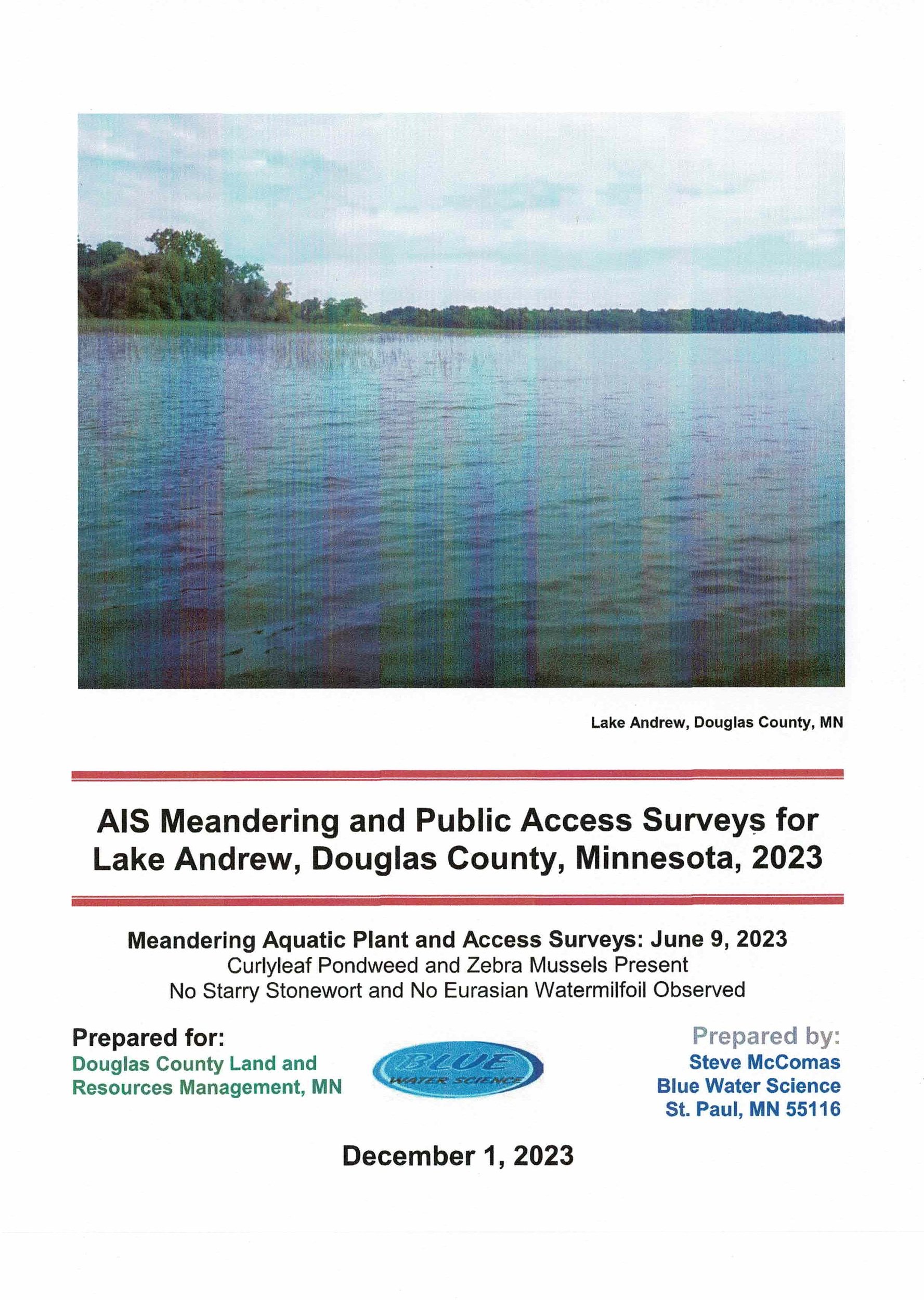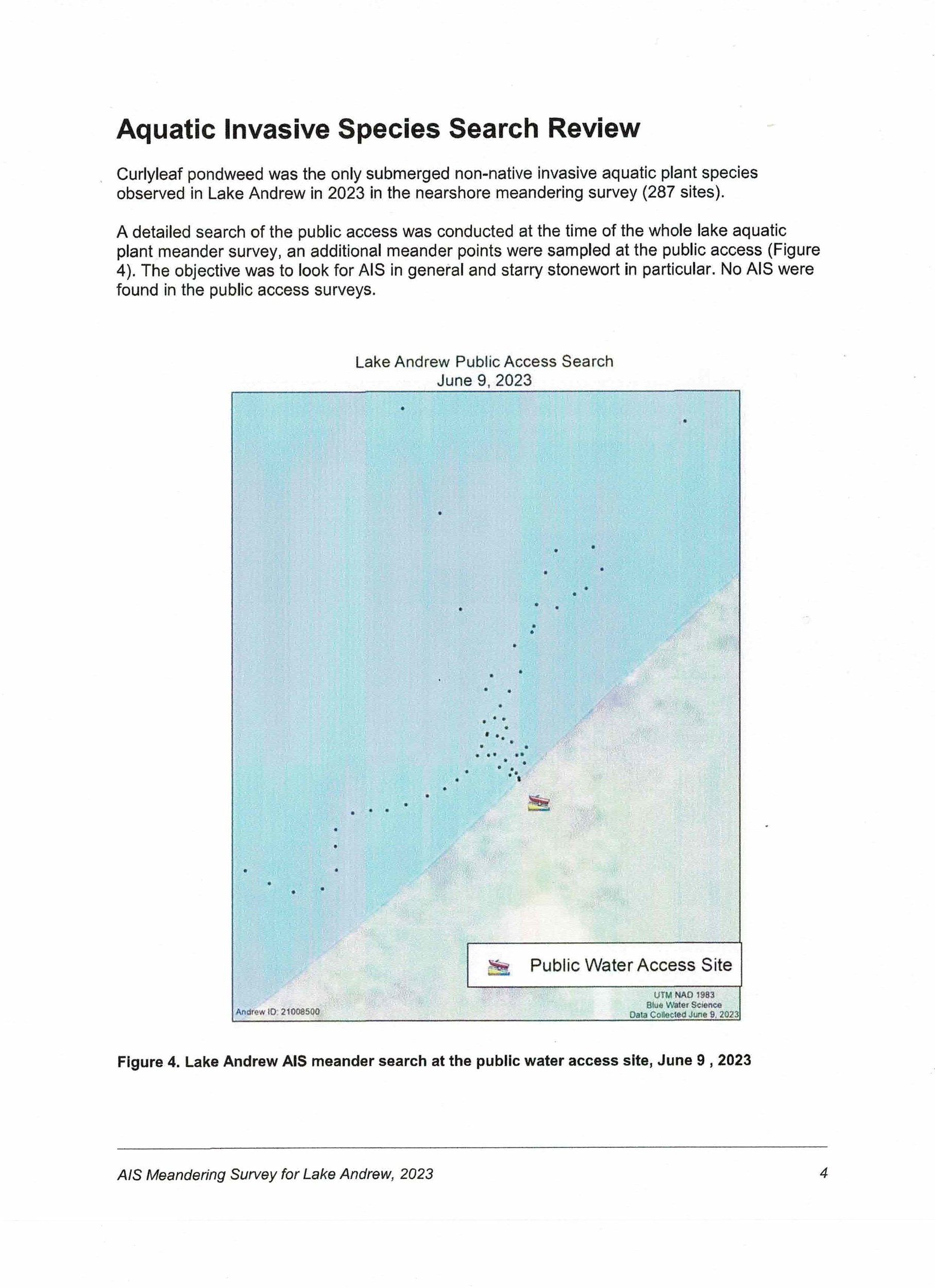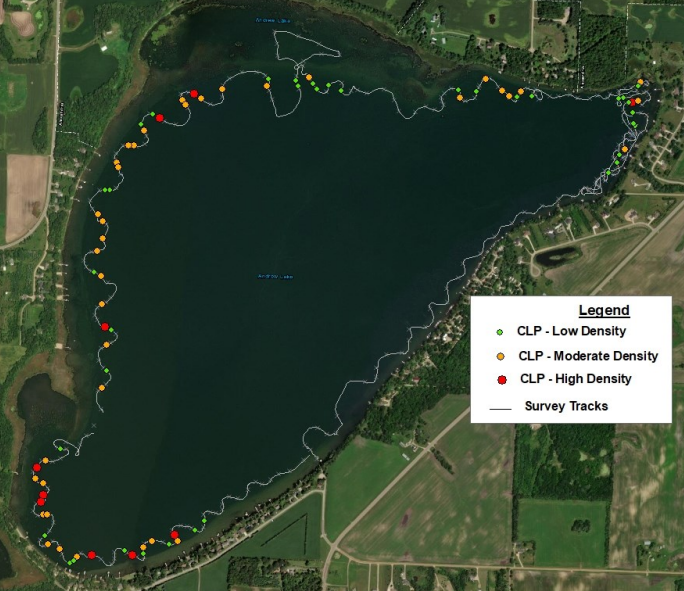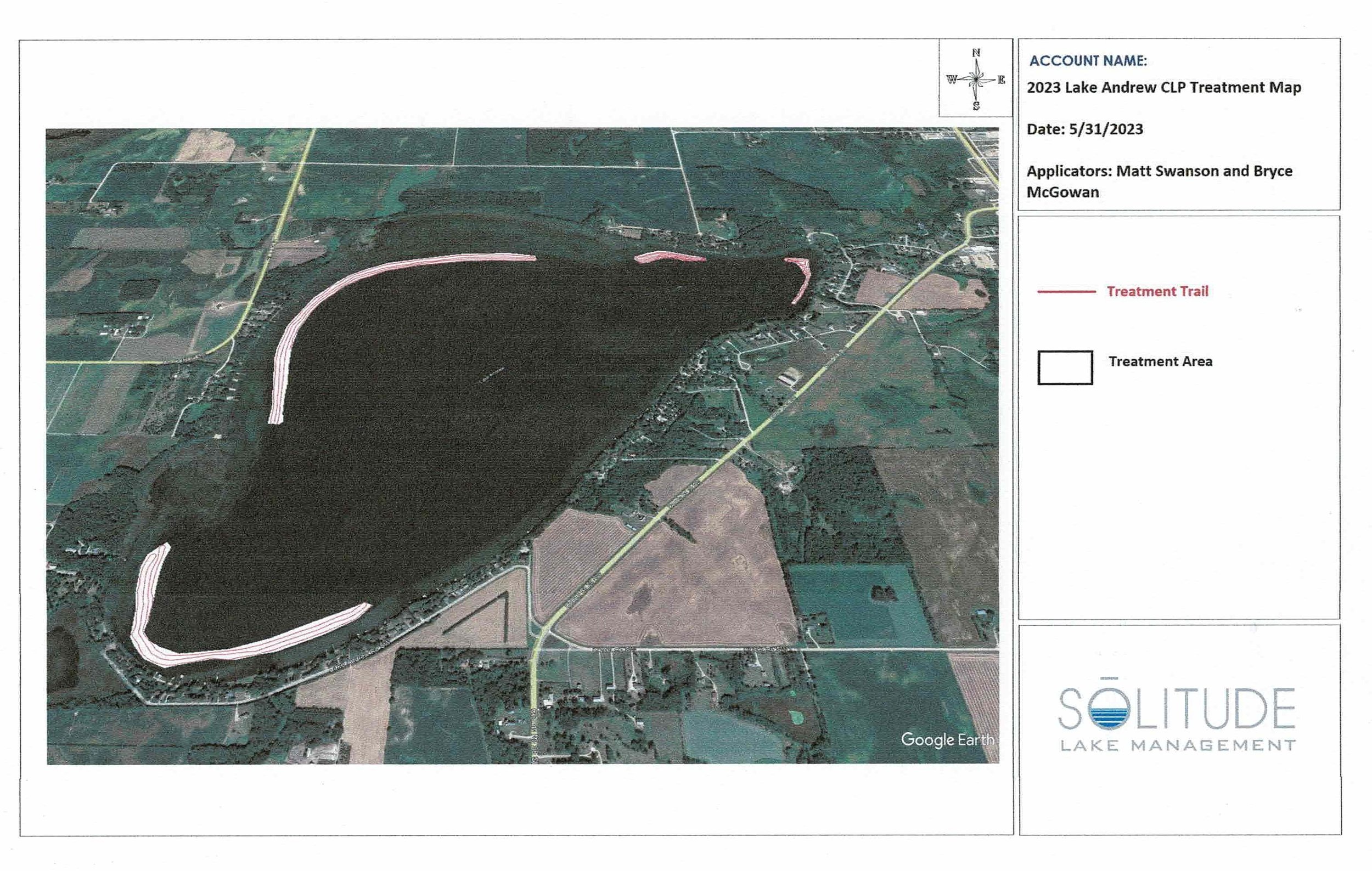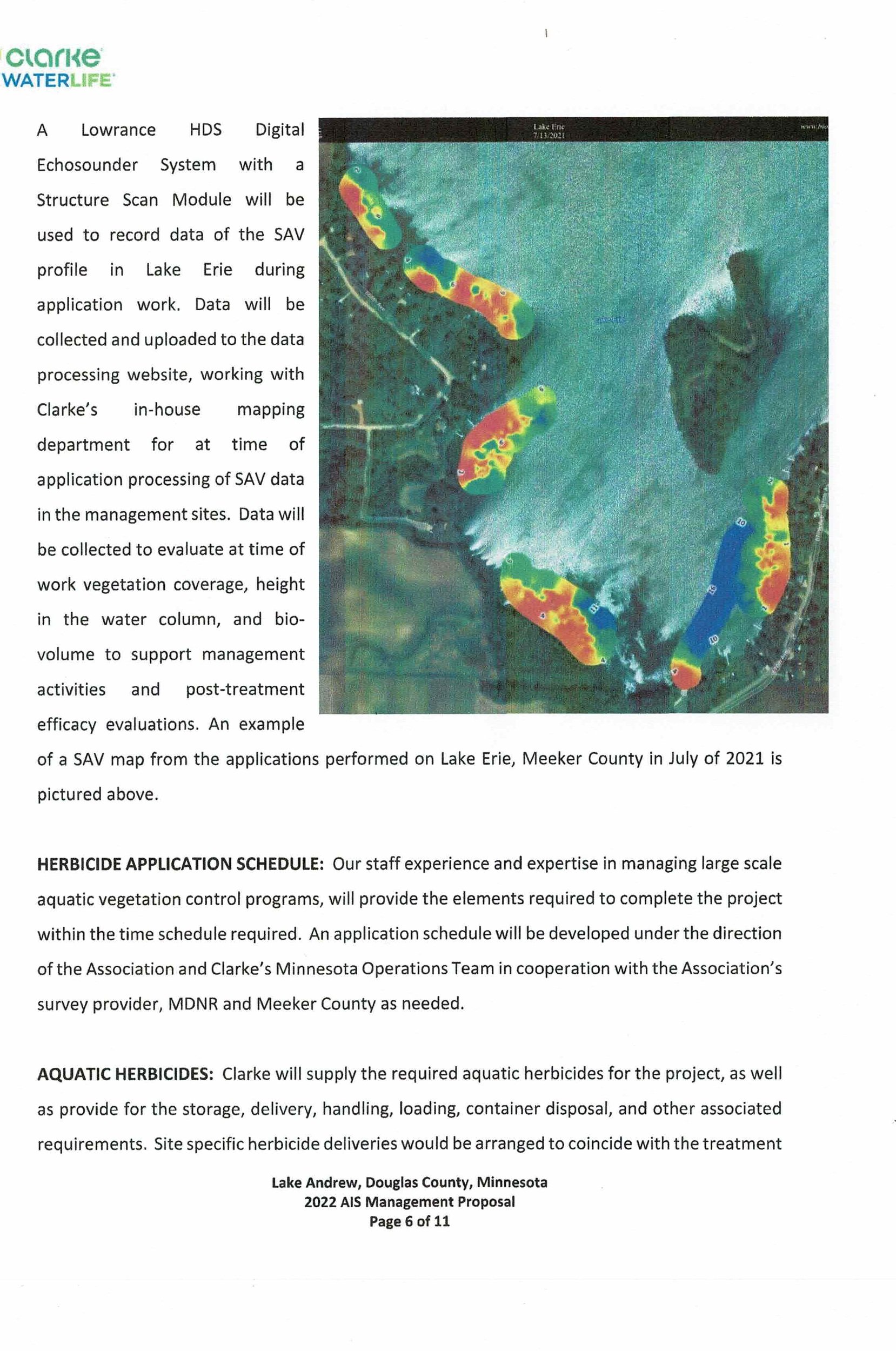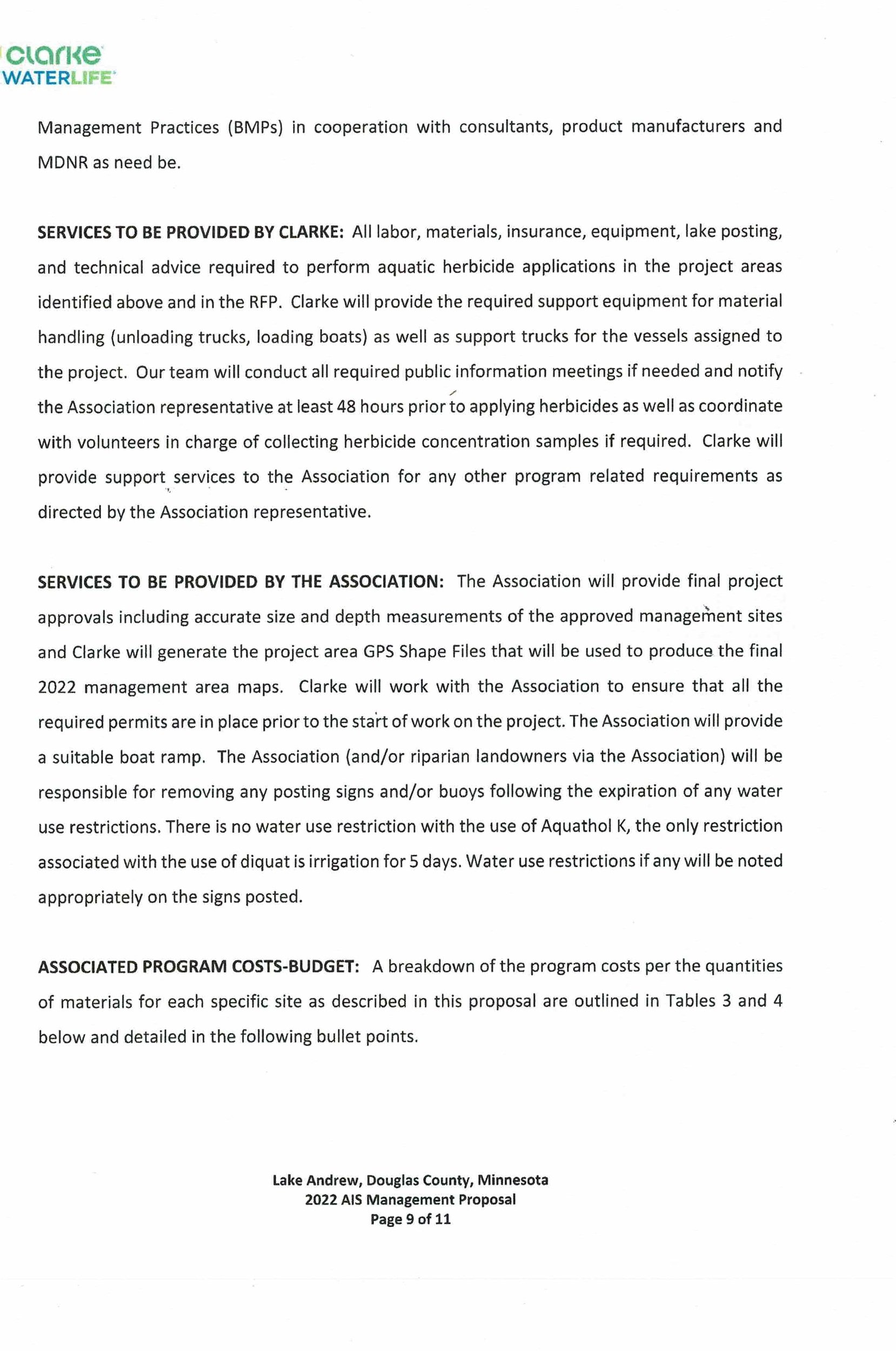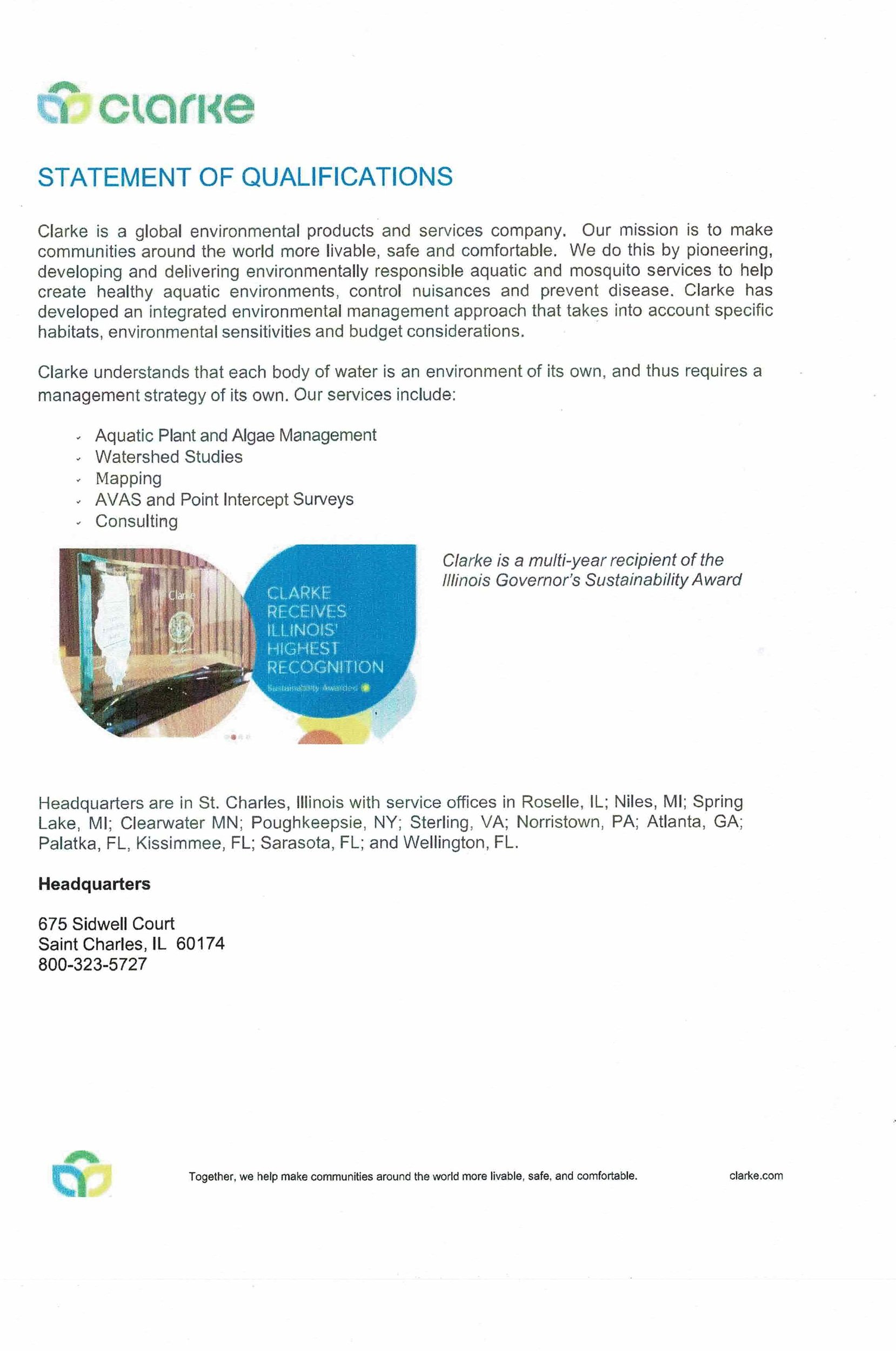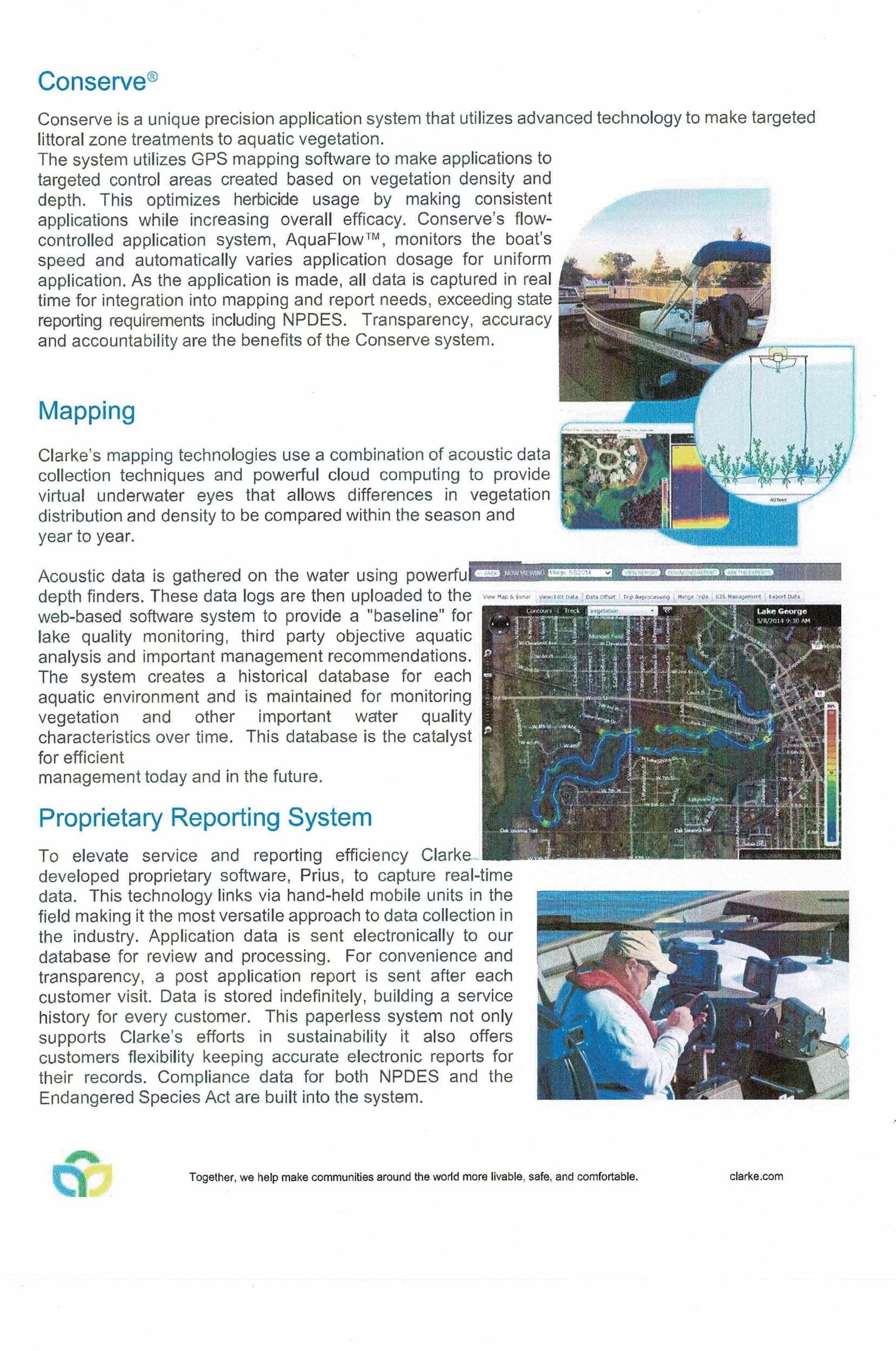Curly-Leaf Pondweed Treatment Effectiveness
On May 30, 2023 Lake Andrew was treated for Curly-Leaf Pondweed. On June 9, 2023 Douglas County contracted with Blue Water Science of St. Paul, MN to perform an AIS Survey on Lake Andrew. Attached is the results from this survey.
The survey shows a reduction of area(s) were Curly-Leaf Pondweed was observed. The GOOD NEWS when reviewing this current survey with survey performed on June 27, 2022 it shows that treatment performed in May is a positive step forward to reduce the effects of Curly-Leaf Pondweed in Lake Andrew. It is important that yearly treatments continue for AIS in Lake Andrew and residents are encouraged to continue donating funds for this treatment.
June 09, 2023 Lake Survey
June 27, 2022 Lake Survey
Treatment for Curly-leaf Pondweed occurred the morning of Tuesday May 30, 2023. Arial map and photo showing method and areas receiving treatment.

Curly-Leaf Pondweed (CLP) Questions/Answers
Q. Where did CLP come from.
A. It’s a native of Eurasia, Africa and Australia and was accidentally introduced in the 1800s as an aquarium release and common carp was introduced into Midwest waters as game fish.
Q. Why is CLP bad.
A. Early spring-summer the plants can form dense mats which can cover large areas of the water surface. Which can reduce water use for recreation.
Q. Is CLP harmful to fish.
A. When CLP dies back in summer dense mats decay releasing nutrients into the water column which contribute to algal blooms. Decomposing plant material can also deplete oxygen levels in the water, causing conditions to possibly kill native fish and species.
Q. What treatments are available to remove and/or control CLP.
A. Non-Herbicide Management options include raking or mechanical chopping equipment is possible. This only temporarily removes surface and submerged plants where fragments and seeds will disperse and regrow in other areas. Herbicide Management options use chemicals which contact and be absorbed by the plant. This will kill the plant to the roots however seeds and fragments can lie dormant for years.
Q. Why is Lake AIS treatments so expensive.
A. The type and amount of herbicide(s) to be used is controlled by governmental agencies. Lake Andrew is a (MnDNR) Minnesota Department of Natural Resources fisheries stocking lake which does not allow the use of lower cost herbicides for treatment.
Q. Is one (1) AIS treatment enough.
A. A one (1) time AIS treatment will not control or eradicate this invasive plant. Studies have shown a minimum 3-5 year management and treatment plan is required to reduce plant growth to a manageable condition. Eradiation is not possible. Once controlled annual surveys and spot treatments would be required which can reduce treatments and costs of the lake annually.
Q. What happens if everyone doesn’t donate to yearly AIS Management.
A. If yearly goal is not reached treatment areas of lake would be limited or not treated in that year. If no treatment takes place in a given year any contribution(s) to the AIS Management Fund for that year would be returned.
Q. Is the AIS Management Fund part of Annual Membership Fund.
A. No, AIS Management Fund is seperate from Membership Fund. The dollars in these funds are used separately. AIS Management funds are used to treat, control, and manage AIS in our lake. Membership funds are used for sustainability, activities, and lake education.
Q. Are contributions to Lake Andrew Association AIS Management, and Membership Funds tax deductible.
A. No. The Lake Andrew Association is not a registered IRS tax deductible organization.

On July 8, 2022 LAA received Lake (AIS) Aquatic Invasive Species survey that was conducted on June 17, 2022.
Below is the submitted survey.
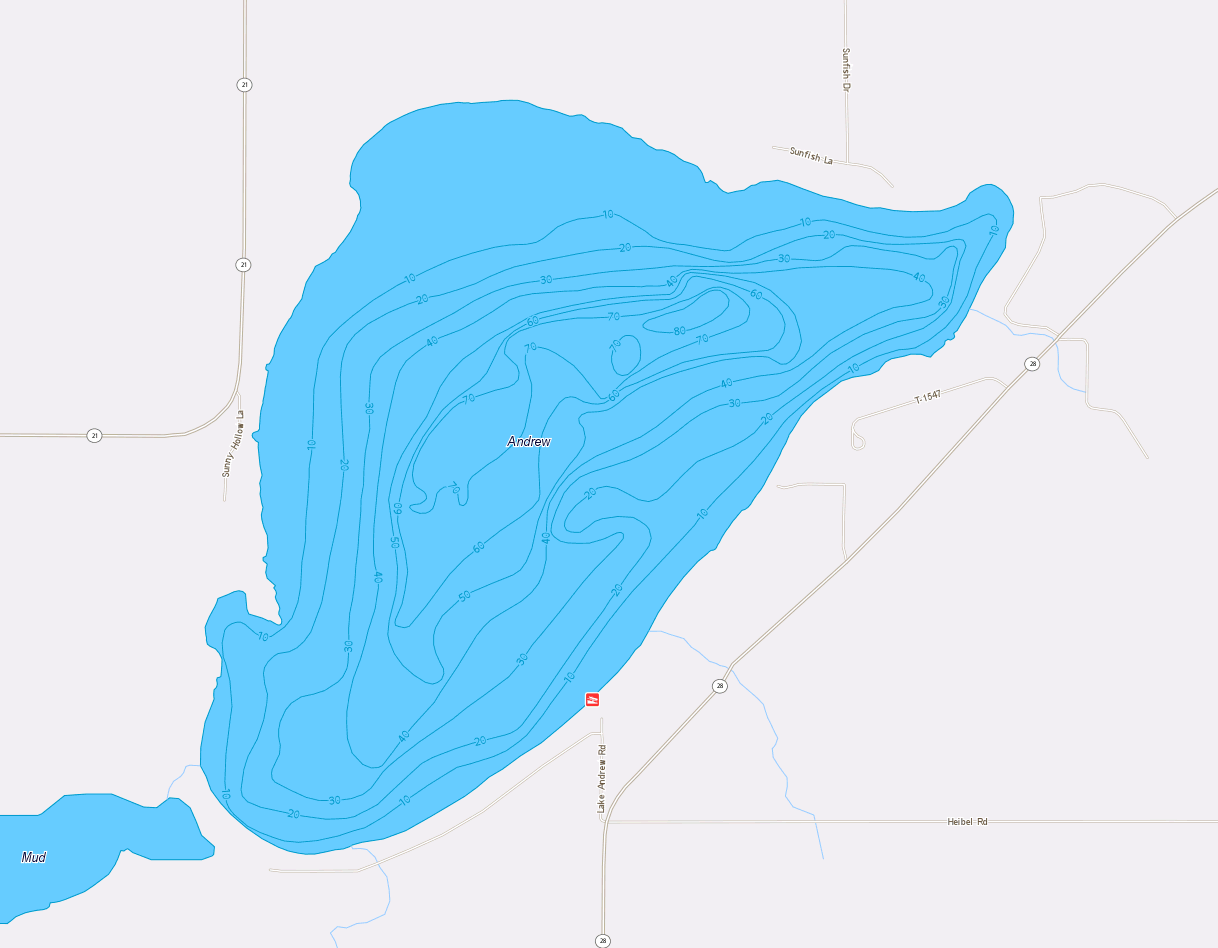

On August 2, 2022 LAA received a lake management proposal for Curly-Leaf Pondweed from Solitude Lake Management formally (Clark Aquatic Service).
Below is that 2023 management proposal.


University of Minnesota Curly-Leaf Pondweed Information
See Below
s

Page 1
Page 2
Page 3
Page 4
